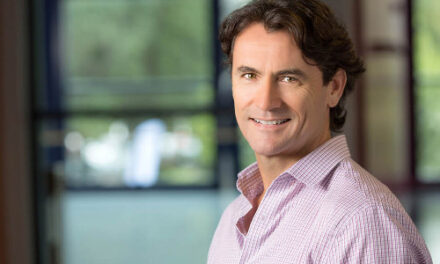The Mallarmé Chamber Players, Durham’s innovative and celebrated chamber ensemble, presented a wonderful concert of Baroque repertoire at St. Mary’s School. In addition to the group’s obvious and outstanding talent, it was a delight to learn about the period instruments they played. Suzanne Rousso, violist and artistic director, played a baroque viola with a straight bow and without a modern chinrest; William Thauer played both the baroque oboe and the airier baroque recorder, a replica instrument that apparently contains bits of wooly mammoth tusks in its body; Beverly Biggs played her beautiful double manual French harpsichord, a replica of one built in 1769. The presence of these instruments made the concert informative as well as enjoyable.
To open the evening, the trio played J.D. Heinichen’s Sonata in C minor, for oboe, viola, and harpsichord. The four movements of this sonata are rather brief, as was the case for all of the chamber works on the program – described in the program as “Small but sparkling!.” Even with slower Adagio movements, this trio was sparkling indeed. In the Allegro movement of the Heinichen Sonata, the viola and oboe intertwine in a fugue-like texture that culminates in parallel harmonies between the two. Beverly Biggs’s continuo improvisations were steady yet graceful, with contrast between rolled chords and vibrant bass patterns. To continue the trend of exposing the audience to lesser-known Baroque composers, Rousso and Biggs next performed William Flackton’s Sonata in G, a work that really allows the viola to shine, with its mellow middle tones and low range. The Allegro movement of this sonata was the most technically fascinating, with Rousso playing solo cadenzas that involved double bowing technique, as well as very rapid melodic patterns.
Next, Biggs and Thauer played a duet – the Sonata in C for oboe and continuo by Carl Ludwig Matthes. This is one of two surviving works of Matthes, both of which are oboe sonatas. Thauer’s excellent dynamic control was showcased here as he produced contrasting dynamics and phrasing with both sustained notes and leaps and trills. In all the movements, fast or slow, the oboe is consistently supported by harpsichord continuo, with a very expressive relationship exemplified by Biggs and Thauer.
Biggs shone in the solo spotlight with an Air and Variations known as Handel’s “The Harmonious Blacksmith.” With the main melody in the right hand, the bass line in the left, and inner harmonies, a complex system of balance was necessary. With each variation, the complexity of the melodic theme increased – not that it mattered to Biggs, whose music was decorated and flowing, ending with a flourish.
It was also a privilege to hear the solo stylings of Thauer and his baroque recorder, a seldom-heard but very pleasant instrument. He played the Suite No. 5 for solo recorder by Joseph Bodin de Boismortier, a French contemporary of Bach and Telemann. In particular, the Rondeau – Gracieusement was fascinating, with an exchange of two simultaneous melodies that switched rapidly between the high and low ranges of the recorder.
To close the concert, all three artists brought to life Telemann’s Trio Sonata in F. With the recorder, these three instruments had a very unique sound together. The phrasing of the trio, particularly at phrase endings, was quite spectacular. Through rapid parallel intervals, melodic sequencing and imitation, or fast scale patterns, these three were completely in sync. It was a privilege to witness such musical mastery.











